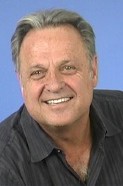- unknown (b.)
Bio/Description
He began his professional career in 1972 as a software engineer at Hewlett-Packard, where he held various software management positions. In 1978 he joined Apple as Director of New Products reporting to Steve Jobs. He was Apple?s first Vice President of Software and Vice President/General Manager for the Lisa division, Apple?s first GUI Computer as well as the VP of Education. In an interview with Andrew Harrison, he revealed that he was recruited personally by Steve Jobs and took a pay cut by half because Steve?s vision was that Apple should be full of people who believe in what they are trying to achieve, not people who see it as a way of making a fast buck. Ironically many people have been made rich by Apple, mainly because they have stuck to that vision; ?To create tools for the mind that advance mankind?. He is quoted as saying, ?This reminds all of us that success comes when we focus on what we are trying to achieve, in our case, better learning outcomes, not just the introduction of technology for technology?s sake.? He said Jobs described computers to him as a ?bicycle for the mind?, exercising and opening up opportunities that people could never before perceive. He retired from Apple once, but Jobs brought him back when he too returned to renew his education vision. Apple?s global education sales now stand at a staggering $9 billion. He sees Jobs legacy rightly alongside the greats of American society such as Rockefeller, Edison and Carnegie as the people who changed things, and in education he believes we are seeing history being made before us in the shape of the iPad, I Books Author and iTunes U. He is very clear, however, that this is not just about the technology; it is the combination of technology, content and pedagogy. A combination that completely changes how we view education, where children learn through devices in new and inspiring ways. One great example he sites is a school showing slowed down images of a basketball trajectory to teach physics or a larger scale study which is challenging children only to answer questions that haven?t been answered, given all the ones that have are just a search away. ?iPads, iTunes and iBook?s Author provide the tools for teaching but how we use them is perhaps the greatest significance.? Per Chuck House ? he did the HP Amigo software and then led Apple's software efforts on the early Apple III and Lisa (he headed up Apple Education until Jobs died). Directly prior to his current position at Apple, he was the Chairman and Chief Executive Officer of DoubleTwist Inc, a leading provider of genomic information and bioinformatics analysis technologies which made headlines as the first company to provide a comprehensive annotation of the human genome. The year before joining DoubleTwist, he was Executive in Residence for Mayfield Fund, where he provided strategic planning, management and technology advice to high technology companies. In 1985, he turned his focus to education at the Santa Fe Christian School where he initiated a program that turned this debt-laden private school into one of the first examples of how the creative use of technology can revolutionize learning in the classroom. Under his leadership as Chairman of the Board of Santa Fe Christian School, the school?s annual losses were annulled as the student body grew from 150 to 1000 while the school?s modest facilities were expanded to a new 17-acre site, offering a range of world-class resources, including a fiber optic network of Macintosh computers. He holds a Bachelor?s degree in Computer Science and a Master?s degree in Electrical Engineering, both from the University of California at Berkeley where he was honored in 2000 as a Distinguished Alumnus. He is also the author of the Science Research Associates textbook, ?Compiler Construction: Theory and Practice?. He has taught at both University of California, Berkeley and at Cal State San Jose.
-
Noted For:
With his extensive background in compiler design, he was one of the primary software architecture designers, along with Arne Bergh, and Bill Williams, who together derived the software environment on which the HP AMIGO/300 was eventually to execute and was considered to be a precursor for the Xerox Alto, even the MacIntosh of which he was one of the developers as well -
Category of Achievement:
-
More Info:


